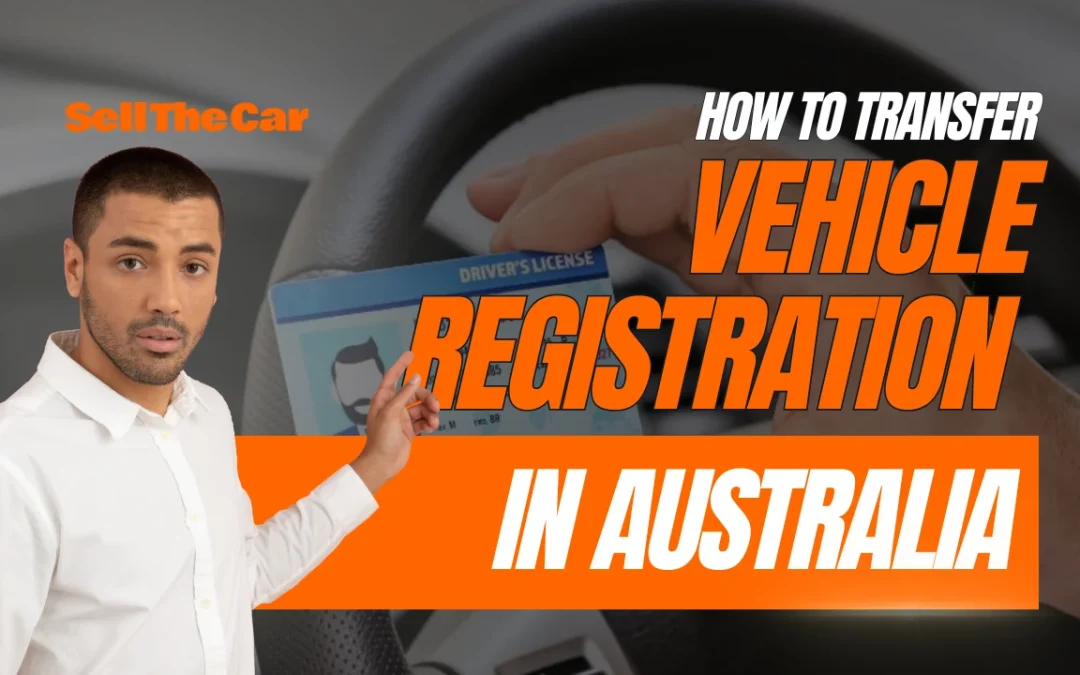Buying or selling a car in Australia or completing a vehicle change ownership process? Then you’ll need to transfer vehicle registration to make sure ownership is legally and officially changed.
Whether you’re selling privately, gifting your car or buying from a family member, this process ensures you’re compliant with state regulations and protected from any future liabilities.
Why Transferring Vehicle Registration is Important
Understanding why a vehicle registration transfer or switching ownership of car matters and how it can save you from legal trouble and financial stress later on.
Here’s why it’s crucial:
- Legal compliance: The vehicle can’t be driven until registration is transferred.
- Liability protection: Prevents fines, tolls or penalties tied to your name after sale.
- Insurance coverage: Most insurers require the policyholder to also be the registered owner.
- Proof of ownership: Confirms who legally owns and is responsible for the vehicle.
- Avoids extra costs: Late transfers can trigger penalties or inspection requirements.
Quick Tip: Complete the transfer of ownership within 14 days of purchase to avoid fines (varies slightly by state).
What You Need Before Transferring a Vehicle Registration
Before you start your vehicle registration transfer (rego) in Australia, it’s important to have the right details and documents ready. Depending on your state, you can transfer vehicle registration online or visit a Service Centre.
Here’s a simple breakdown of what you’ll need for both options
To Transfer a Vehicle Registration (rego) Online
You’ll typically need:
- The vehicle registration number
- The Vehicle Identification Number (VIN) or chassis number
- The surname or organisation name of both buyer and seller
- The date of purchase and purchase price (or market value – whichever is higher)
- Valid driver’s licences for both parties (e.g., NSW, VIC or Tasmanian licence)
- A valid payment method for the vehicle transfer fee and stamp duty
- A clear, scanned proof of purchase (invoice, receipt or sale agreement)
Tip: You cannot complete a transfer of registration online unless both buyer and seller meet the digital ID or licence requirements in that state. In such cases, you’ll need to visit your nearest Service Centre.
To Transfer a Vehicle Registration at a Service Centre
If you prefer to complete the change of ownership of a vehicle in person, bring:
- A completed Application for Transfer of Vehicle Registration form (or use the reverse side of your registration certificate)
- The signatures of both previous and new owners
- Proof of identity documents such as a current driver’s licence, passport or photo ID
- The vehicle’s registration certificate
- Proof of exemption from duty (if applicable)
- A valid form of payment for all applicable vehicle transfer fees
Some states may also require a roadworthy certificate or safety inspection before you can complete the transfer.
Duty Exemptions and Special Situations
Certain situations qualify for duty exemptions on the transfer of vehicle registration, such as:
- Transfers between family members (e.g., parent to child, spouses)
- Vehicles transferred as part of a deceased estate
- Transfers within the same company group or business entity
If you think you may be eligible for an exemption, check your state’s Transport Services or Revenue Office website for approval guidelines.
Transferring on Behalf of Another Person or Business
If you’re transferring the registration on someone else’s behalf, you must provide:
- A letter of authority from the registered owner giving you permission to act
- A copy of the owner’s driver’s licence or proof of identity
For company or organisation vehicles, you’ll need to provide:
- A letter of authority on company letterhead confirming your authorisation, or
- Attend in company uniform or bring a business card displaying your name and company logo.
Example: If you’re handling a vehicle ownership transfer online for a fleet vehicle under your company, always upload the letter of authority during the application process.
Proof of Identity and Address Requirements
Each state requires identity verification for both buyer and seller. For instance, in Tasmania:
- You must have a Tasmanian driver’s licence or provide ID documents such as a passport, Medicare card or birth certificate.
- Address proof may include a lease agreement, utility bill or financial statement.
If you’re transferring a vehicle on behalf of someone else or a company, you’ll need a letter of authority and valid proof of representation.
How to Transfer Vehicle Registration
Here’s the standard process that applies across most Australian states:
- Seller lodges a Notice of Disposal (online or in person).
- Buyer completes the transfer of registration (within 14 days).
- Both parties sign the vehicle transfer form.
- The buyer pays transfer fee and stamp duty.
- Buyer submits documents online or at a Service Centre.
- Buyer receives confirmation of vehicle ownership transfer.
State-by-State Guide: How to Transfer Vehicle Registration (REGO) in Australia
Let’s break it down by region
| State / Territory | Process | Transfer Deadline | Useful Links |
|---|---|---|---|
| NSW | Seller lodges a Notice of Disposal via Service NSW. Buyer transfers rego online or at a centre with proof of ID and signed certificate. | 14 days | Service NSW |
| VIC | Both buyer and seller must have myVicRoads accounts. Seller starts the process online; buyer completes by paying fees. | 14 days | VicRoads |
| QLD | Sellers complete an Application to Transfer online or at a service centre. Buyers finalise within 14 days. | 14 days | QLD Transport |
| WA | Sellers notify the Department of Transport within 7 days; buyers confirm ownership online or in person. | 14 days | WA Transport |
| SA | Submit the transfer online via EzyReg or visit a Service SA centre. | 14 days | Service SA |
| TAS | Both parties need Tas licences. Buyer completes transfer online with VIN and rego details, or in person. | 14 days | Service Tasmania |
| ACT | Buyers complete transfer at an Access Canberra centre with ID and payment. | 14 days | Access Canberra |
| NT | Buyers and sellers fill the R11 form and provide proof of NT residence. | 14 days | NT Transport |
Vehicle Transfer Fees Across States
| State | Approx. Transfer Fee | Stamp Duty Applies? |
|---|---|---|
| NSW | $36 | ✅ Yes |
| VIC | $40.70 | ✅ Yes |
| QLD | $29.20 | ✅ Yes |
| SA | $31 | ✅ Yes |
| WA | $19.90 | ✅ Yes |
| TAS | $31 | ✅ Yes |
| ACT | $40 | ✅ Yes |
| NT | $19.50 | ✅ Yes |
Tip: Use your state’s online fee calculator to estimate total costs, including duty exemptions for certain transfers (e.g. family transfers or deceased estates).
Vehicle Transfer Documents and Forms
To complete your vehicle registration transfer, you’ll typically need:
- Application for Transfer of Vehicle Registration Form
- Proof of identity (buyer and seller)
- Proof of ownership or sale receipt
- CTP insurance certificate (where applicable)
- Roadworthy certificate or vehicle inspection report
- Number plate check or VIN check for verification
Special Vehicle Transfer Scenarios
Transfer of Registration to Family Members
You can transfer car ownership or registration to a family member in NSW or VIC at a reduced fee, provided you can show proof of relationship (e.g., birth certificate or marriage certificate).
Deceased Estate Transfer
If the vehicle belongs to a deceased person, the executor or next of kin must submit probate or death certificate documents with the transfer form.
Company Transfers
Businesses can transfer vehicle rego by providing an ACN and letter of authority on company letterhead.
Read More – Understanding Car Depreciation in Australia 2025
How to Transfer Vehicle Registration Online (Example: NSW)
If you’re wondering “Can I transfer vehicle registration online?”, here’s how:
- Log in to your MyServiceNSW account.
- Enter vehicle details (VIN or registration number).
- Upload proof of purchase and ID.
- Pay transfer registration NSW fees.
- Receive digital confirmation of vehicle transfer online.
Checking Vehicle Registration & Car History
Before buying or transferring, always check vehicle registration status to avoid purchasing a car with unpaid fines or encumbrances.
Options include:
- PPSR VIN Check (Australia)
- State based number plate check portals
- Car history check free Australia services
Common Mistakes to Avoid
- Forgetting to submit Notice of Disposal as a seller
- Missing the 14-day transfer deadline
- Not confirming CTP insurance coverage
- Incorrect or missing signatures on transfer forms
- Not checking if vehicle registration is transferable
Conclusion
Transferring a car’s registration (rego) in Australia is easier than ever especially with online services available in every state. By following this guide, you can complete your vehicle registration transfer quickly, avoid penalties and ensure legal ownership. Always check your local transport authority’s website for the most recent fees and online forms.
For more expert insights, visit Sell The Car, your trusted partner in digital visibility, compliance and online growth.
FAQs: Vehicle Registration Transfer in Australia
Can you transfer vehicle registration online?
Yes, in most Australian states you can easily transfer vehicle registration online through official government portals such as Service NSW, VicRoads or Queensland Transport. The online process usually takes less than 15 minutes just to have your VIN, registration number, proof of purchase and valid ID ready.
Sell The Car recommends always double checking your state’s website for the latest requirements, since each region’s online system can vary slightly.
How do I transfer car registration in NSW?
To transfer car registration in NSW, the seller must first submit a Notice of Disposal via Service NSW. The buyer then has 14 days to complete the vehicle registration transfer online or in person.
You’ll need your driver’s licence, the registration certificate signed by both parties and proof of purchase.
Tip from Sell The Car: Do this within 14 days to avoid late fees and penalties.
Can I transfer a car registration to another person?
Absolutely! You can transfer a car registration to another person such as a family member, business partner or buyer as long as both parties sign the transfer form.
You’ll just need to provide proof of ownership, identity documents and pay the relevant transfer of registration fees.
Some states (like NSW and VIC) even offer reduced fees for family transfers.
How much does it cost to transfer vehicle registration?
The vehicle transfer fee varies depending on the state or territory but generally falls between $20–$40, plus stamp duty based on the car’s sale price or market value. If you’re unsure, use your state’s transfer fee calculator for an accurate estimate.
According to Sell The Car, staying within the legal 14 day window can save you extra charges or inspection requirements later.
How do I transfer a car into my name?
If you’ve just bought a vehicle, you can transfer the car into your name by:
- Completing an Application for Transfer of Vehicle
- Registration form (online or at a Service Centre).
- Submitting proof of purchase and ID.
- Paying the transfer registration and stamp duty fees.
Once processed, you’ll receive a new registration certificate showing you as the official vehicle owner.
How do I check my car registration or VIN details?
You can check your vehicle registration online through your state’s official transport website for example, Service NSW or VicRoads.
For a more detailed background, you can also run a VIN check or use a car history check free Australia service to confirm if the vehicle has any outstanding loans, fines or prior accidents.
A quick number plate check before buying a car can help protect you from scams or unpaid liabilities.
What documents do I need for a vehicle registration transfer?
To complete your vehicle registration transfer, you’ll generally need:
- A valid driver’s licence or photo ID
- Proof of purchase (invoice or receipt)
- The Application for Transfer of Vehicle Registration form
- The vehicle’s current registration certificate
- Proof of exemption (if applicable)
Pro tip from Sell The Car: Keep digital copies of all documents they’re often accepted for online transfers.
What happens if I don’t transfer my registration on time?
If you don’t complete your vehicle ownership transfer within 14 days of purchase, you could face late transfer fees, inspection costs or even temporary suspension of registration in some states.
It’s always better to complete your vehicle registration transfer right away as it protects both the buyer and seller from future legal or financial issues.
Related Blogs
Where To Sell My Car For Cash In Melbourne?
If you’re wondering “Where can I sell my car for cash in Melbourne?”, you’ve already taken the smartest first step toward turning your car into quick, guaranteed money. Whether it’s an old daily driver, a used family vehicle or a prestige car collecting dust in the...
Best Used Sedans in Australia 2025: Affordable & Reliable
Car preferences shift with time, just like music or fashion trends. In Australia, the spotlight is now on SUVs, but for decades, the sedan was the nation’s favourite family car. From Holden Commodores and Ford Falcons to Toyota Camrys, sedans were once the most...
The Best Used Cars in Australia 2025
Why Buying Affordable Second Hand Cars Could Be the Smartest Move You’ll Make Let’s be real - new cars are great, but the price you pay for that new-car smell? Not so much. If you're a smart buyer, you know the best value often lives in the used car market. Why?...




